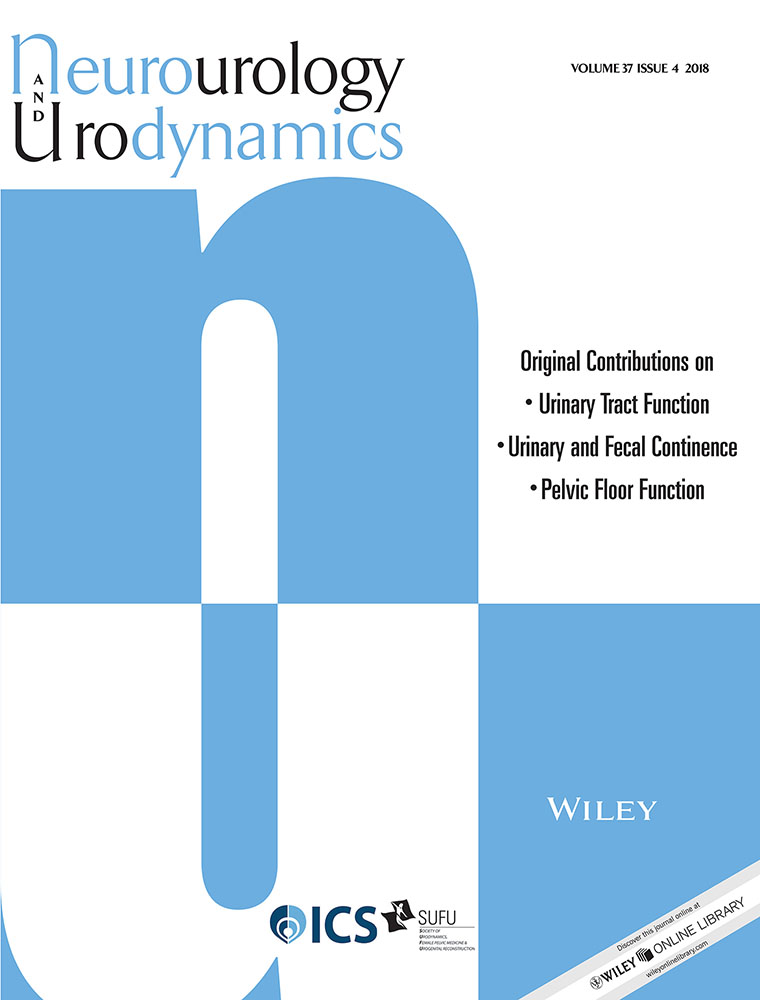Age-associated urethral dysfunction in urethane-anesthetized rats
Abstract
Aims
We aimed to investigate the age-associated changes in movement coordination between the urinary bladder and the urethra in rats.
Methods
A total of 17 female Sprague-Dawley rats were used. The rats were divided into young (3 months old) and middle-aged (12-15 months old) groups. In both groups, isovolumetric cystometry and urethral perfusion pressure (UPP) measurements were performed under urethane anesthesia. After the rhythmic bladder contractions stabilized, L-arginine, a nitric oxide (NO) substrate (100 mg/kg), was administered intravenously in both groups. Subsequently, N-nitro-L-arginine methyl ester hydrochloride (L-NAME) (50 mg/kg) was injected intravenously to inhibit NO synthase activity in both groups.
Results
UPP change, defined as UPP nadir minus baseline UPP, was significantly smaller in middle-aged rats (64%) than in young rats (P < 0.05). The mean amplitude of high-frequency oscillations (HFOs) of the external urethral sphincter was also significantly lower (62%) in middle-aged rats than that in young rats (P < 0.05). Urethral contraction during UPP change was also noted in middle-aged rats. This urethral contraction disappeared after L-arginine administration. UPP nadir during bladder contraction was inhibited by L-NAME in both groups. UPP change was greater in middle-aged rats than in young rats, and 3 out of 9 middle-aged rats showed a detrusor-sphincter dyssynergia pattern after L-NAME.
Conclusions
The results indicated that aging induces dysfunction in movement coordination between the urinary bladder and the urethra. Thus, age-associated urethral dysfunctions may lead to inefficient voiding with increased post-void residual urine volume, which is often observed in elderly populations.




